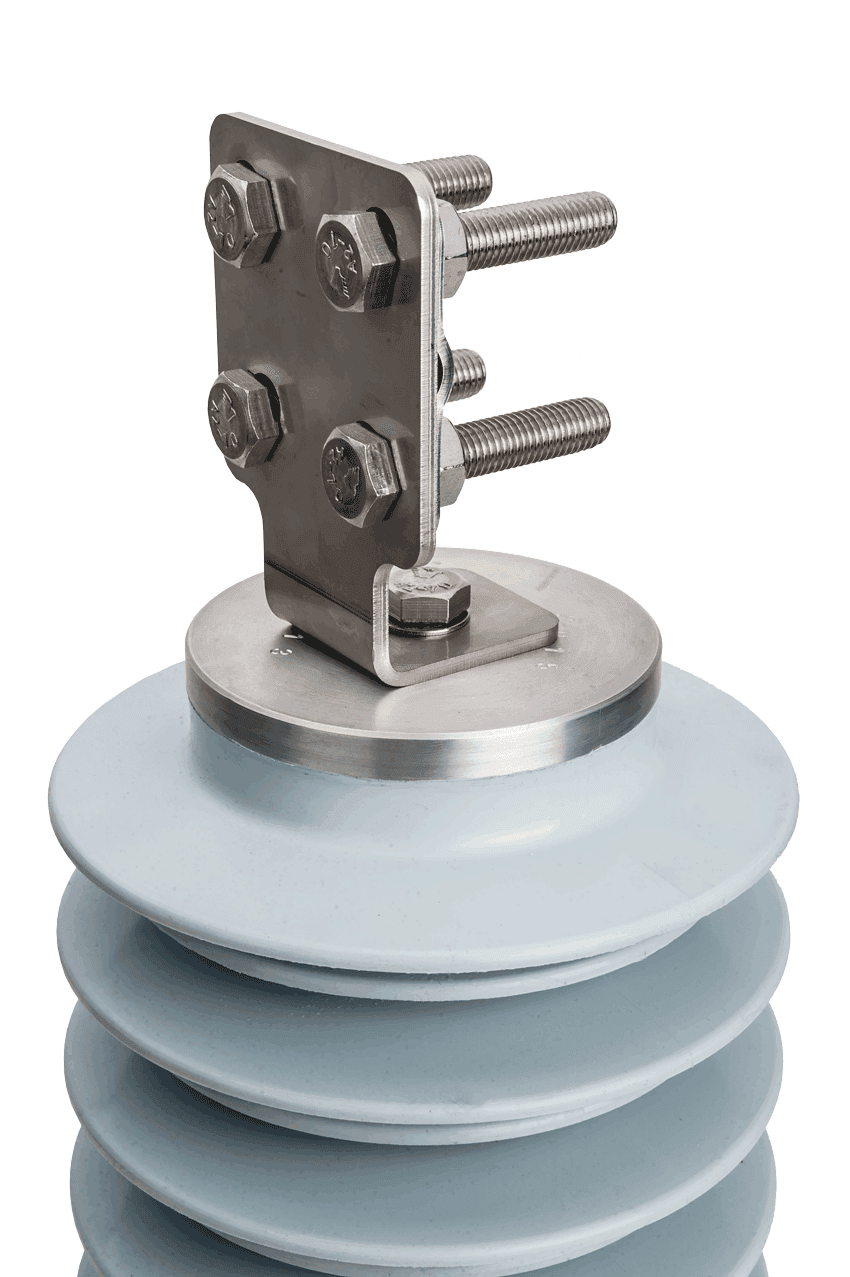
Medium Voltage AC surge arresters
The parameters of the surge arresters must be selected according to the operating point in the power system and must meet the requirements of the relevant standards and the user's technical specifications. In addition to selling high-quality Protektel arresters, we help our partners choose the most suitable ones for their applications.
Other products
Search
Medium-voltage surge arresters
The most important aspect of maintaining the continuity of the country’s energy supply is protecting high-voltage (HV) networks. However, when considering distribution systems, surge arresters for medium-voltage (MV) networks are equally crucial. Their lines account for more than 37% of the length of all power lines in Poland. Let’s examine why MV surge arresters are essential in distribution systems and how to select them optimally.
Introduction to medium voltage surge arresters
Medium-voltage (MV) surge arresters are key protective devices in electric power systems. They suppress sudden voltage surges caused by lightning or switching operations in the network, limiting voltage values in the protected installation to levels that are safe for connected equipment.
When the voltage in the system exceeds a predetermined safe level, the surge arrester momentarily enters a conducting state and lowers its resistance. This acts as a safety valve, dissipating excess energy to the ground.
In addition to protecting against damage to the electrical components of the medium-voltage grid, the use of MV arresters provides other benefits. They ensure greater stability and continuity in power grid operation, minimizing the risk of serious failures due to the damaging effects of lightning surges.
Considering all of the above, it’s not hard to guess why medium voltage surge arresters are an indispensable part of modern medium-voltage networks.
Application of surge arresters in MV overhead lines
Currently, there are approximately 832,000 km of power lines in use in Poland. Of these, 311,000 km are medium-voltage lines, while high-voltage lines comprise only about 34,000 km (or about 4%) of the total grid.
While they fulfill completely different roles and the length of both networks does not mean that one is more important than the other, it partially affects the susceptibility of the network to atmospheric conditions – the longer the lines, the more exposed to lightning strikes they are. Depending on the storm activity zone, a power line can be exposed to between 11.6 (northern zone) and 31.3 (southern zone) lightning strikes per year.
Thus, MV overhead lines—making up the backbone of local distribution systems—are particularly vulnerable to storm surges. A lightning strike even a few kilometers from the line can induce an overvoltage that exceeds the network’s operating value.
To reduce such risk of insulator damage, MV surge arresters are used on lines. This type of protection neutralizes both direct lightning surges (LEMP) and switching surges (SEMP).
Selecting arresters by application
Selecting medium-voltage (MV) surge arresters is crucial for ensuring effective insulation protection for power grid equipment. This process requires consideration of several important factors. First, it is necessary to determine the permanent operating voltage (Uc), which must be greater than the line voltage that can occur at the arrester terminals. Uc should account for the highest line voltage and ground fault factor. Additionally, the resistance to slow-voltage surges should exceed the expected surges in the network.
Depending on the application, the selection of arrestors can, of course, vary.
For example, a different rated discharge current will be recommended for protecting distribution transformers in MV lines compared to industrial installations. It is important to select arresters with the appropriate discharge rating, considering the short-circuit current at the installation site. The selection process should also include an analysis of operating conditions, such as ambient temperature, environmental pollution, and altitude.
In practice, selecting MV surge arresters should begin with collecting information about the power grid, including voltage, frequency, and ground fault factor. Then, it is necessary to determine the characteristics of the protected facilities and select the appropriate arrester parameters. Correct selection of medium-voltage surge arresters is key to ensuring the safety and reliability of the power grid.
PROXAR surge arresters for MV networks
Protektel offers solutions dedicated to different segments of MV networks.
- PROXAR-IN AC
The PROXAR-IN AC model is a distribution-class arrester with a voltage rating of 1.2–48 kV, designed to protect overhead lines and distribution transformers. It is optimized for reliable operation in both outdoor and indoor conditions, and its design allows installation in horizontal, vertical, or inverted positions.
- PROXAR-IVN AC
PROXAR-IVN AC arresters in silicone housing are designed for special applications such as generators, large capacitor banks, generator breaker sets, MV switchgear, and electric traction systems. They protect against surges caused by multiple lightning strikes or switching operations.
All PROXAR arresters are characterized by high efficiency of surge protection, high energy resistance, resistance to damage, and easy installation and maintenance-free operation. Compared to the competition, our solutions are distinguished by the use of our patented polyamide braid technology. In addition to providing adequate mechanical strength, it also allows them to meet set technical parameters.
Surge arrester 1000 V
PROXAR arresters are also suitable for auxiliary applications. These arresters are characterized by lower voltages (1000 V and above) and high energy dissipation capability, providing comprehensive protection in various market segments.
Summary
MV surge arresters are the foundation of reliability in modern distribution networks. As demonstrated by the Warsaw streetcar network, where the number of power outages dropped significantly after modernizing the protection system, investing in these devices directly translates to reduced operating costs.
In the coming years, further development of arrester technology can be expected. The right choice of PROXAR devices already makes it possible to protect infrastructure from surges, minimizing the risk of costly outages.




